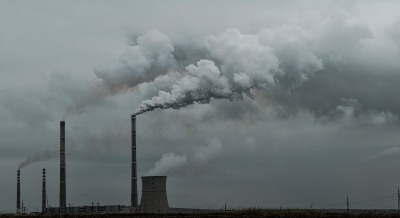
Particulate matter or refers particle pollution to the mixture of tiny solid and liquid particles-metals, chemicals, dust, spores, etc.-present in the air we breathe. Many of these particles are harmful to us humans. Not just that. Particulate matter pollution alters our environment by contributing to acid rain, changing weather patterns, global warming, etc.
Where does particle pollution come from?
Particle pollution can come from two different kinds of sources — primary or secondary. Primary sources cause particle pollution on their own. For example, wood stoves and forest fires are primary sources.
Secondary sources let off gases that can form particles. Power plants and coal fires are examples of secondary sources. Some other common sources of particle pollution can be either primary or secondary — for example, factories, cars and trucks, and construction sites.
Smoke from fires and emissions (releases) from power plants, industrial facilities, and cars and trucks contain PM2.5.
Particle Pollution and Your Health
Breathing in particle pollution can be harmful to your health. Coarse (bigger) particles, called PM10, can irritate your eyes, nose, and throat. Dust from roads, farms, dry riverbeds, construction sites, and mines are types of PM10.
Fine (smaller) particles, called PM2.5, are more dangerous because they can get into the deep parts of your lungs — or even into your blood.
How can particle pollution affect our health?
Particle pollution can affect anyone, but it bothers some people more than others. People most likely to experience health effects caused by particle pollution include:
- People with heart or lung diseases (for example, asthma)
- Older adults
- Babies and children
Particle pollution has also been linked to:
- Eye irritation
- Lung and throat irritation
- Trouble breathing
- Lung cancer
- Problems with babies at birth (for example, low birth weight)
Take Action
When particle pollution levels are high, take steps to limit the amount of air you breathe in while you’re outside. For example:
- Think about spending more time indoors, where particle pollution levels are usually lower.
- Choose easier outdoor activities (like walking instead of running) so you don’t breathe as hard.
- Avoid busy roads and highways where PM is usually worse because of emissions from cars and trucks.
Credit : Centers of disease control and preventions
Picture Credit : Google




